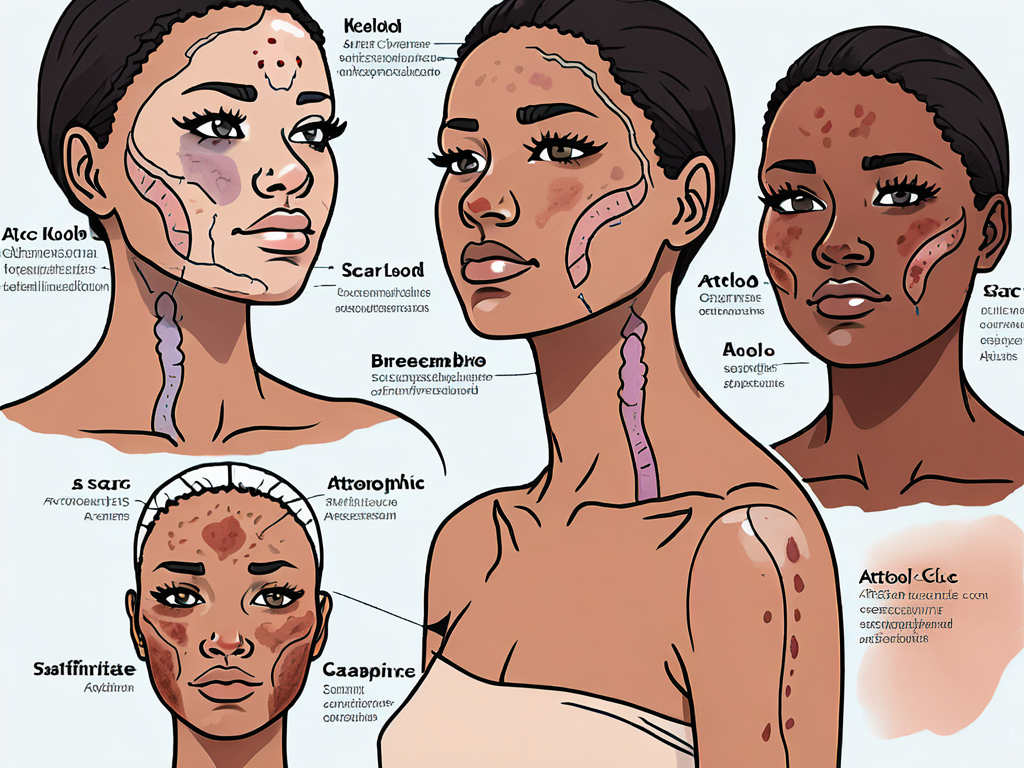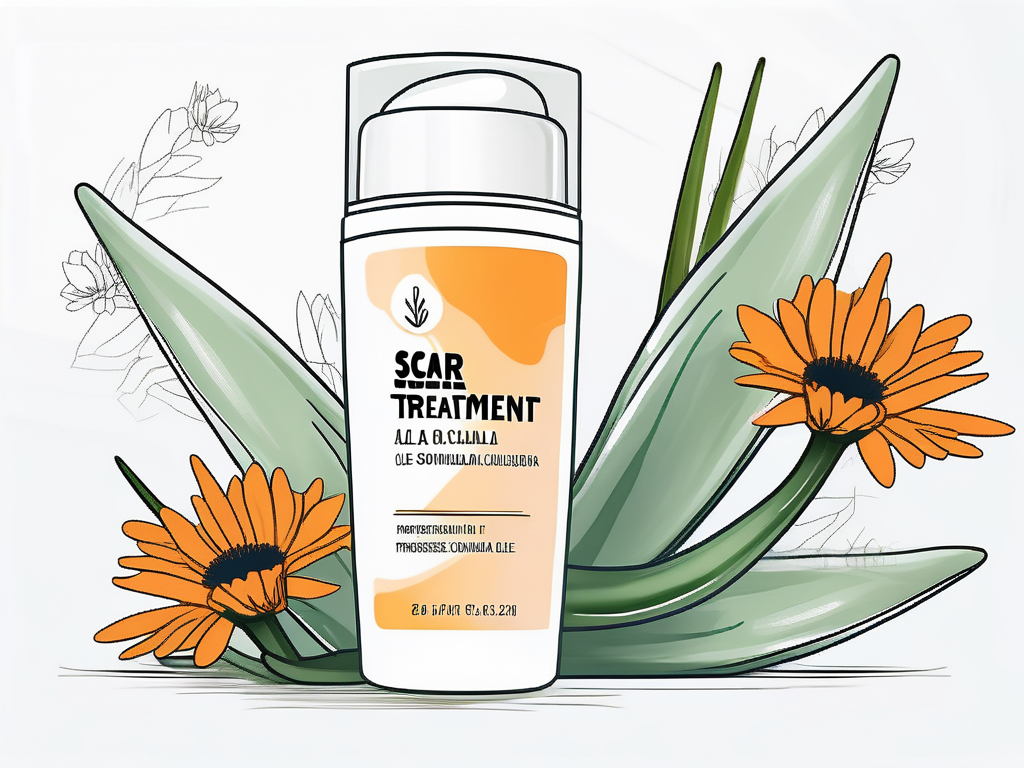Living with cheek biting scars can be a distressing experience. These scars, resulting from the habit of biting the insides of the cheeks, can leave lasting marks on your face and affect your self-confidence. In this comprehensive guide, we will explore the different aspects of cheek biting scars and provide you with valuable information on how to effectively treat and manage them.
Understanding Cheek Biting Scars
Before delving into the treatment options, it is important to have a thorough understanding of cheek biting scars. These scars develop as a result of the repeated trauma caused by biting the inside of the cheeks. When the inner tissues are constantly irritated and injured, the body's natural healing process leads to the formation of scars.
While some scars may fade over time, others can be more persistent and require intervention to improve their appearance. By understanding the science behind scar formation and the psychological implications of cheek biting, you can gain insights into the best approaches for treatment.
The Science Behind Scar Formation
Scar formation is a complex biological process that occurs when the skin or tissues are injured. When cheek biting occurs, the body initiates its healing response, which involves the production of collagen fibers to repair the damaged tissue. However, the collagen fibers in scars are arranged differently than in normal skin, resulting in a visible mark.
The extent of scarring may vary depending on several factors, such as the severity and frequency of the biting, individual skin characteristics, and the body's healing response. Understanding these underlying mechanisms can help in choosing the most appropriate treatment options.
Furthermore, it is fascinating to note that the body's ability to heal itself is truly remarkable. The process of scar formation involves a delicate balance of cellular signaling and tissue remodeling. Specialized cells called fibroblasts play a crucial role in this process by producing collagen, the main structural protein in the skin. The collagen fibers are meticulously arranged to restore the integrity of the damaged tissue. However, due to the unique arrangement of collagen fibers in scars, the resulting tissue appears different from the surrounding skin.
Psychological Implications of Cheek Biting
Aside from the physical aspect, cheek biting scars can also have psychological implications. The constant reminder of the habit and the visible aftermath can lead to feelings of self-consciousness and lowered self-esteem. It is important to acknowledge the emotional impact of these scars and address them alongside the physical treatment.
Seeking support through therapy or joining support groups can provide a platform to share experiences, gain advice, and cope with the psychological effects. Remember, you are not alone in this journey, and there are effective ways to manage both the physical and emotional aspects of cheek biting scars.
Moreover, it is worth mentioning that the psychological impact of cheek biting scars can vary from person to person. Some individuals may develop coping mechanisms to deal with the emotional distress, while others may struggle with self-acceptance. Understanding the unique challenges faced by each individual can help tailor treatment plans that address both the physical and psychological aspects of healing.
Identifying Different Types of Scars
When it comes to treating cheek biting scars, it is crucial to identify the specific type of scar you are dealing with. This knowledge will help determine the most suitable course of treatment.

Scars can tell a story of the body's remarkable ability to heal itself after injury. Understanding the different types of scars can provide valuable insights into the underlying processes of tissue repair and regeneration.
Keloid Scars
Keloid scars are characterized by their raised and thickened appearance. They extend beyond the boundaries of the original wound and can be itchy or painful. Keloid scars occur when the body overproduces collagen during the healing process. Treatment options for keloid scars may include steroid injections, laser therapy, or surgical removal.
Interestingly, keloid scars have a higher prevalence in certain populations, particularly individuals with darker skin tones. This disparity has spurred ongoing research into the genetic and environmental factors that contribute to keloid formation.
Hypertrophic Scars
Hypertrophic scars are similar to keloid scars in terms of raised appearance, but they do not exceed the original wound boundaries. These scars can be red or pink and may fade over time. Treatment options for hypertrophic scars can include silicone sheets or patches, intralesional steroid injections, and laser therapy.
Recent advancements in scar management have led to the development of innovative therapies such as cryotherapy and pressure garments, which show promising results in reducing the prominence of hypertrophic scars.
Atrophic Scars
Atrophic scars appear as depressions or pits in the skin. These scars are usually caused by a loss of tissue, and they can be challenging to treat. Options for improving the appearance of atrophic scars include laser resurfacing, dermal fillers, and microdermabrasion.
Patients with atrophic scars often seek personalized treatment plans that combine multiple modalities to address both the textural irregularities and discoloration associated with these types of scars. The field of scar revision continues to evolve, offering hope to individuals seeking to restore the natural beauty and integrity of their skin.
Over-the-Counter Treatments for Scars
There are various over-the-counter treatments available for managing cheek biting scars. While not all of them may produce dramatic results, they can help in improving the appearance and texture of the scars.

Scar Removal Creams and Gels
Scar removal creams and gels often contain active ingredients that aim to promote collagen synthesis and reduce inflammation. Regular application of these products may help in fading scars over time. However, it is important to note that results can vary, and it may take several weeks or even months before noticeable improvements occur.
One popular ingredient found in scar removal creams and gels is onion extract. Onion extract has been shown to have anti-inflammatory properties and may help in reducing scar redness and swelling. Another common ingredient is vitamin C, which plays a crucial role in collagen production, aiding in the healing process of scars.
Before using any scar removal creams or gels, it is advisable to patch test them on a small area of skin to check for any potential allergic reactions or adverse effects. Additionally, consult with a dermatologist for recommendations tailored to your specific needs.
Silicone Sheets and Patches
Silicone sheets or patches are another commonly used method for scar treatment. These adhesive sheets can be applied over the scars, creating a protective barrier that helps flatten and soften the tissue. Silicone sheets are non-invasive and relatively easy to use, making them a convenient option for managing cheek biting scars.
Studies have shown that silicone sheets can effectively reduce scar thickness and improve scar texture. The mechanism behind their effectiveness lies in their ability to hydrate the scar tissue, regulate collagen production, and create a favorable environment for scar healing.
It is important to follow the instructions provided with the silicone sheets and use them consistently to achieve optimal results. If you experience any discomfort or irritation, discontinue use and consult with a healthcare professional.
Natural Remedies
Some individuals prefer to explore natural remedies for managing their cheek biting scars. While limited scientific evidence supports their effectiveness, certain natural ingredients may possess properties that aid in scar reduction.
Examples of natural remedies often suggested for scar treatment include aloe vera gel, coconut oil, vitamin E oil, and honey. These substances may have moisturizing, anti-inflammatory, or antioxidant properties that contribute to scar healing. Aloe vera gel, for instance, has been used for centuries for its soothing and regenerative properties, while coconut oil is known for its moisturizing and antibacterial effects.
However, it is important to remember that natural remedies may not work for everyone, and individual results may vary. It is always a good idea to consult with a healthcare professional or dermatologist before trying any natural remedies to ensure they are safe and suitable for your specific situation.
Medical Procedures for Scar Reduction
In certain cases, over-the-counter treatments may not provide satisfactory results. In such situations, medical procedures can offer more advanced options for scar reduction.

Laser Therapy for Scars
Laser therapy is a non-invasive procedure that uses targeted laser beams to break down scar tissue and stimulate collagen production in the skin. This treatment can help improve the appearance of various types of scars, including cheek biting scars.
Multiple sessions of laser therapy may be required to achieve the desired results, and downtime may be necessary to allow the skin to heal. It is important to consult with a qualified dermatologist or medical practitioner to evaluate the suitability of laser therapy for your specific case.
Surgical Scar Removal
For more severe cases of cheek biting scars, surgical scar removal may be considered. This procedure involves excising the scar tissue and suturing the wound edges together. Surgical scar removal is typically performed under local anesthesia, and recovery time may vary depending on the size and location of the scar.
It is essential to consult with a skilled plastic surgeon or dermatologist to assess your eligibility for surgical scar removal and discuss the potential risks and benefits associated with the procedure.
Steroid Injections
Steroid injections, such as corticosteroids, are commonly used for the treatment of keloid and hypertrophic scars. These injections work by reducing inflammation and flattening the raised scar tissue. Multiple sessions may be required at regular intervals to achieve the desired outcome.
It is important to note that steroid injections may have side effects, including temporary discoloration of the skin or thinning of the surrounding tissue. Close monitoring by a healthcare professional is necessary during the treatment process.
While there are several treatment options available for managing cheek biting scars, it is crucial to approach them with realistic expectations and consult with healthcare professionals who specialize in scar treatment. Each individual's situation is unique, and what works for one person may not work for another.
Remember to be patient and consistent with your chosen treatment approach. With the right combination of treatments and the support of professionals, you can effectively reduce the appearance of cheek biting scars and regain your confidence.
If you're looking to protect your cheeks from further biting and reduce the risk of developing scars, consider investing in a custom mouth guard from Remi. Our mouth guards are designed to be a perfect fit, especially for those who clench their teeth at night, helping to prevent damage and promote healing of existing scars. With Remi, you can enjoy the convenience of an at-home impression kit and the assurance of a high-quality, BPA-free product made in the USA. Join The Remi Club for continuous protection and savings, or try our products risk-free with our 30-day return policy. Ready to take the first step towards safeguarding your smile and boosting your confidence? Shop Now and discover the Remi difference.













